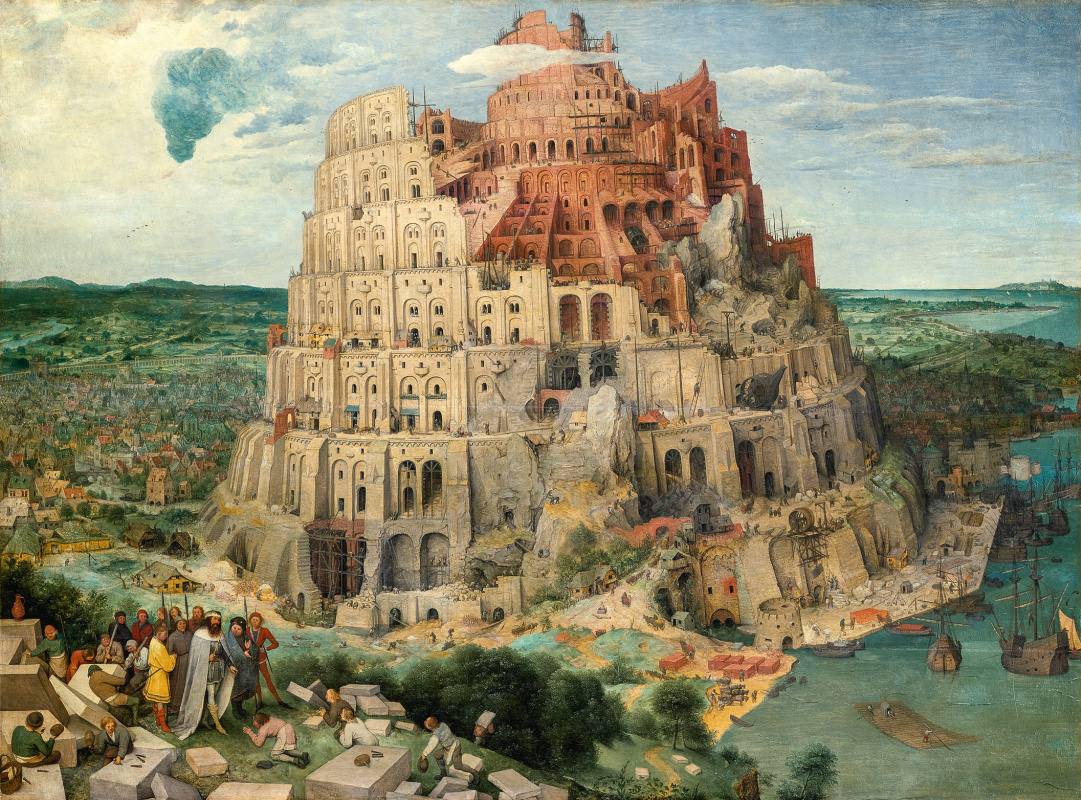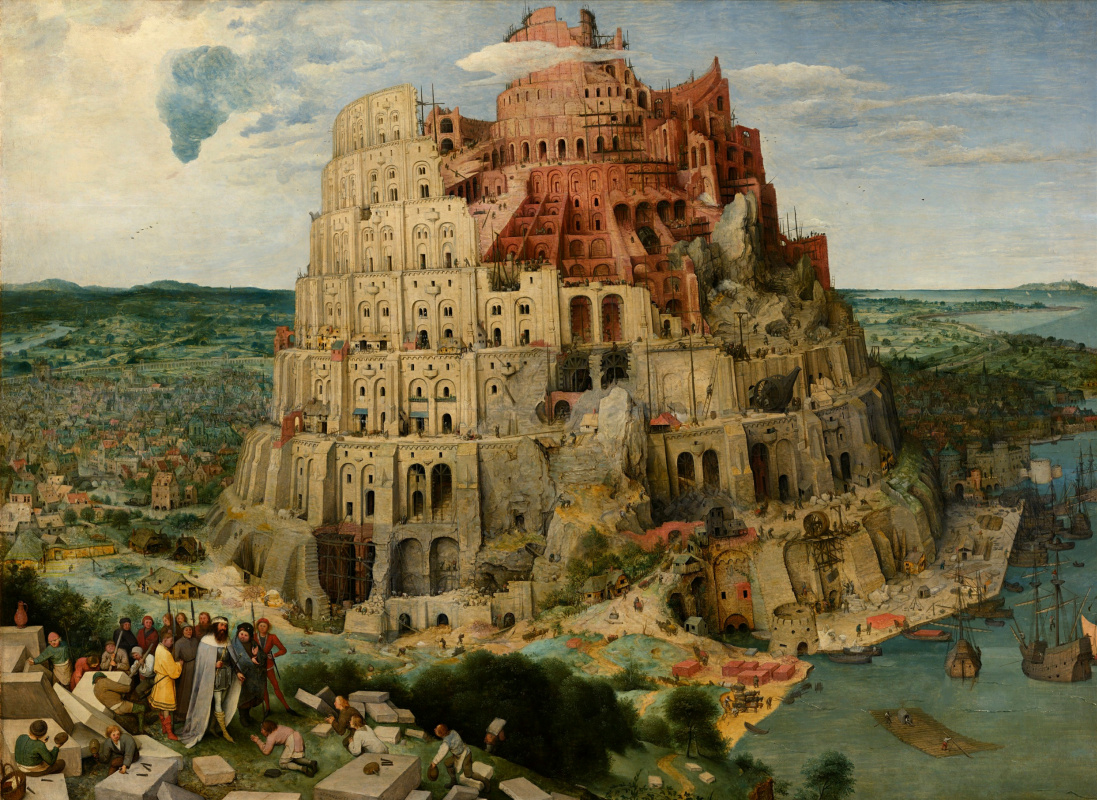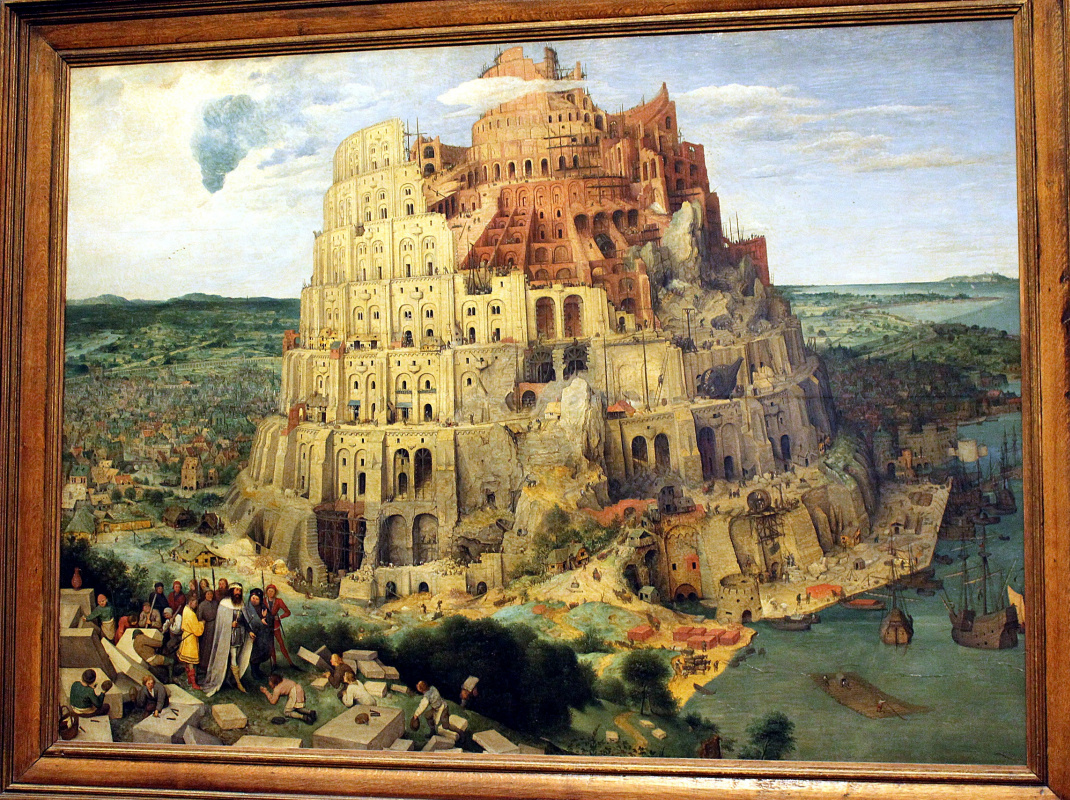log in
Enter site
Login to use Arthive functionality to the maximum
Tower of Babel
Pieter Bruegel The Elder • Painting, 1563, 114×155 cm
Description of the artwork «Tower of Babel»
Source paintings by Peter Bruegel "The Tower of Babel" - The Book of Genesis, which tells of the fertile land in the valleys of the Tigris and Euphrates rivers. There, people puffed up, conceived to build a tower that reaches the sky. Angry, God confused their tongues. People stopped understanding each other, and the tower was never built.
The Tower of Babel was one of the most common motifs of Dutch painting of the 15th-16th centuries. This was due to interest not so much to the Bible as to modernity. Seaside cities grew rapidly, they were crowded with visiting merchants and preachers, various religious groups formed and immediately entered into conflicts. Only in the first half of the 16th century did the population of Antwerp, where Bruegel worked, doubled; at least a thousand of its inhabitants were foreigners. All this created a strong multicultural tension, which allowed to compare modern Breugel the Netherlands with Babylon.
But, despite the prevalence of the plot, no one before Bruegel could so reliably convey the monstrous dimensions of the structure. His “Tower of Babel” amazes with its scope, thorough knowledge of engineering subtleties and elaboration of the smallest details. It best manifests the unique Bruegel method, combining the hardly compatible - panoramic painting and miniature.
In appearance, the Bruegel tower is a cross between a lively anthill or a hive and the Colosseum, which the artist could undoubtedly see in Rome. In the lower left corner, Bruegel portrays King Nimrod, surrounded by a retinue, who came to inspect the progress of construction, and the masons who fell before him to his knees.
Bruegel shows how stones and logs are brought to the construction site along the river (similarly, building materials were delivered to Antwerp). Ladders, scaffoldings, a lifting mechanism, borrowed directly from the market square of Antwerp, buttresses surrounding the tower, are needed to counteract lateral spreading - the artist is very accurate in conveying engineering moments.
Tower erected unevenly. Different levels of construction are shown at different levels. The lower floors of the tower have already been inhabited - in the windows and doorways, you can see the inhabitants, and the upper levels are full of work. But its inconsistency, which gives the tower a surrealistic look, says that the separation of languages has already happened or is about to happen, that people have already stopped communicating with each other and the matter is unlikely to be brought to completion.
It is known that Bruegel painted pictures on this story at least three times. Two of them survived: the “big” “Tower of Babel” is kept in Vienna, and "Small" - in Rotterdam.
Author: Anna Yesterday
The Tower of Babel was one of the most common motifs of Dutch painting of the 15th-16th centuries. This was due to interest not so much to the Bible as to modernity. Seaside cities grew rapidly, they were crowded with visiting merchants and preachers, various religious groups formed and immediately entered into conflicts. Only in the first half of the 16th century did the population of Antwerp, where Bruegel worked, doubled; at least a thousand of its inhabitants were foreigners. All this created a strong multicultural tension, which allowed to compare modern Breugel the Netherlands with Babylon.
But, despite the prevalence of the plot, no one before Bruegel could so reliably convey the monstrous dimensions of the structure. His “Tower of Babel” amazes with its scope, thorough knowledge of engineering subtleties and elaboration of the smallest details. It best manifests the unique Bruegel method, combining the hardly compatible - panoramic painting and miniature.
In appearance, the Bruegel tower is a cross between a lively anthill or a hive and the Colosseum, which the artist could undoubtedly see in Rome. In the lower left corner, Bruegel portrays King Nimrod, surrounded by a retinue, who came to inspect the progress of construction, and the masons who fell before him to his knees.
Bruegel shows how stones and logs are brought to the construction site along the river (similarly, building materials were delivered to Antwerp). Ladders, scaffoldings, a lifting mechanism, borrowed directly from the market square of Antwerp, buttresses surrounding the tower, are needed to counteract lateral spreading - the artist is very accurate in conveying engineering moments.
Tower erected unevenly. Different levels of construction are shown at different levels. The lower floors of the tower have already been inhabited - in the windows and doorways, you can see the inhabitants, and the upper levels are full of work. But its inconsistency, which gives the tower a surrealistic look, says that the separation of languages has already happened or is about to happen, that people have already stopped communicating with each other and the matter is unlikely to be brought to completion.
It is known that Bruegel painted pictures on this story at least three times. Two of them survived: the “big” “Tower of Babel” is kept in Vienna, and "Small" - in Rotterdam.
Author: Anna Yesterday










